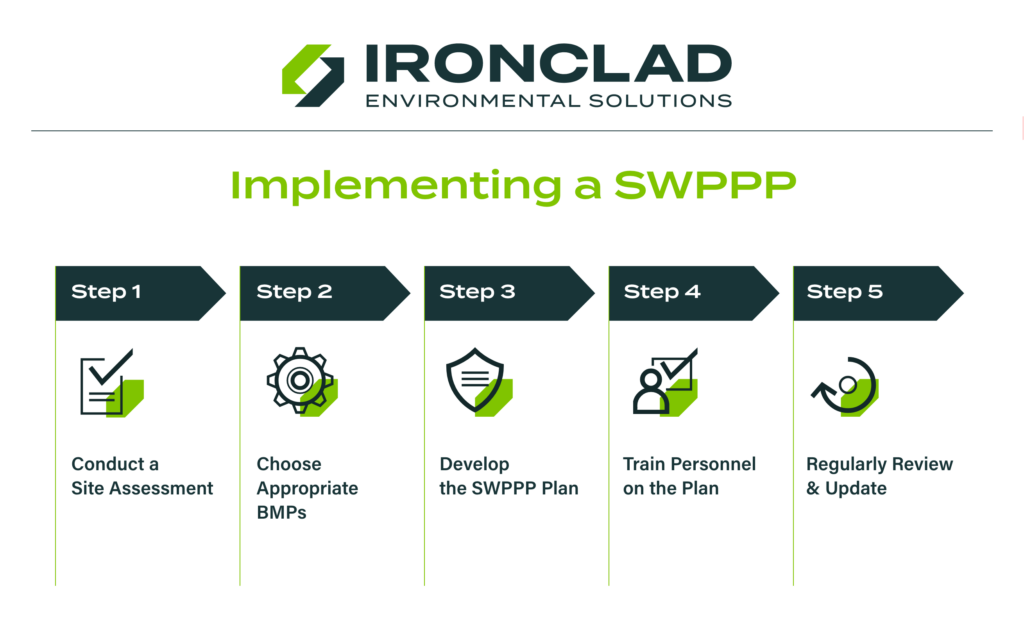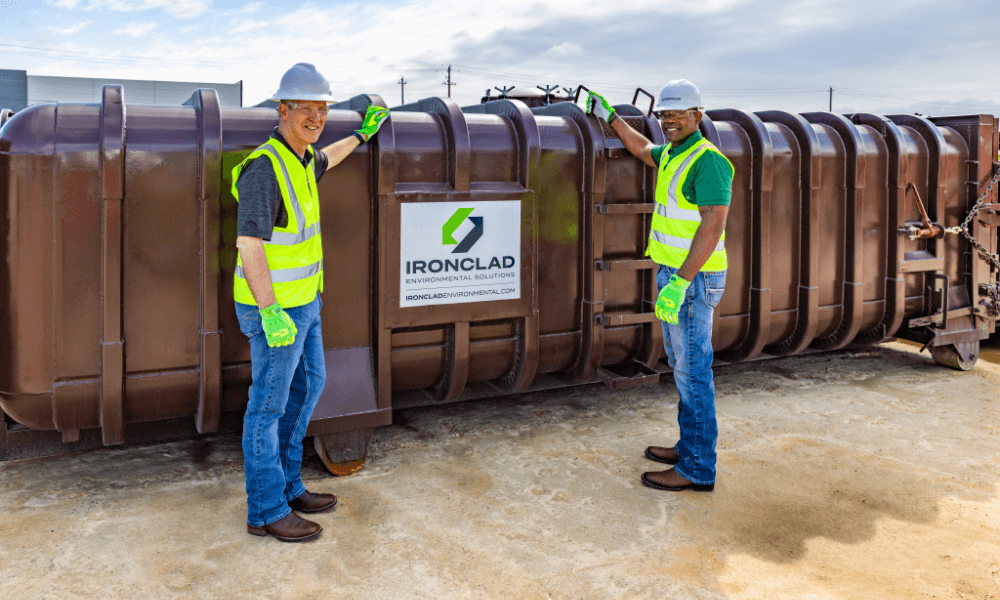Creating Your Stormwater Pollution Prevention Plan (SWPPP)
Short Answer: A Stormwater Pollution Prevention Plan (SWPPP) is a document that outlines strategies for minimizing pollution from stormwater runoff at construction and industrial sites. These plans are applicable when a project involves more than one acre of grading/disturbance. It’s a crucial part of complying with environmental regulations and protecting natural resources during and after a project.
Mitigating Stormwater Pollution
Stormwater runoff can significantly contribute to water pollution if not properly managed. It’s caused by surface water or rainwater that runs over impervious surfaces. Runoff can carry sediment, oil, chemicals, debris, and other pollutants directly into nearby water bodies, degrading water and environmental quality. Implementing SWPPPs is essential for controlling these pollutants, ensuring that they are either contained or treated before they can affect the environment.
Who Needs a SWPPP?
A SWPPP is required for construction sites and industrial facilities where activities disturb more than one acre of land or projects that are part of a larger plan of development. This includes land disturbance activities such as major housing developments and road construction, municipal separate storm sewer systems, and industrial operations like manufacturing plants and refineries. Non-compliance with these plans can lead to severe penalties, including large fines and potential termination of operations.
Legal Requirements
SWPPP requirements are legally enforced under the National Pollutant Discharge Elimination System (NPDES), which is part of the Environmental Protection Agency‘s Clean Water Act. This program mandates that a facility that discharges pollutants through stormwater must obtain a permit. An NPDES stormwater permit outlines the specific measures that general contractors and site operators must implement to regulate stormwater discharge, linking directly back to the SWPPP.
The Components of a Stormwater Pollution Prevention Plan
A comprehensive SWPPP is structured with several key components, each critical for ensuring effective management and prevention of stormwater pollution.
- Site Description: Details the general layout and natural features of the site, including existing land use and the type of construction or industrial activities involved.
- Site Map: Provides a detailed map of drainage patterns, areas of land disturbance, and the locations of major structural and non-structural controls.
- Potential Pollution Sources: Identifies sources that could affect stormwater quality, such as storage and material handling areas, equipment maintenance and cleaning areas, and any areas where waste is generated.
- Control Measures: Details the methods used to control pollutants at the source or prevent them from entering.
- Inspection and Maintenance: Establishes protocols for regular inspections and maintenance of stormwater controls, as well as monitoring to ensure the SWPPP is working effectively.
- Plans for Keeping Up-to-Date: Outlines how the SWPPP will be updated in response to new regulatory changes or modifications in operations.
Best Management Practices
BMPs are another important component of a SWPPP, designed to meet industry standards and comply with specific permits. They list the practices and controls used to reduce or eliminate the discharge of pollutants. These practices are selected based on the nature of the project and the specific materials that need to be managed. They can include controls like silt fences and detention/retention ponds for sediment control.

Putting a SWPPP Together
- Conduct a Site Assessment
- Select Appropriate BMPs
- Develop the Plan
- Train Personnel
- Regularly Review & Update the Plan
A detailed breakdown of each individual step includes:
Site Assessment
Conduct a thorough evaluation of the site to assess current conditions, identify potential sources of stormwater pollution, identify approaches to protect natural resources, and put together site maps.
BMPs
Based on the assessment, select the Best Management Practices that will be most effective for controlling pollution at the site. BMPs should align with the identified risks and the specific conditions of the site.
Developing the Plan
Put together a detailed document that includes all of the components of a SWPPP, and how each measure will be implemented, maintained, and monitored.
Training & Communication
It’s important to train all personnel involved in the project on the requirements of the SWPPP and their specific roles in its implementation.
Regular Reviews & Updates
Regularly review the effectiveness of the SWPPP and update it to reflect any changes in site conditions, construction activities, or industry regulations. After completion of the project, final stabilization of the site is required. The construction general permit outlines the specific requirements for this step and once the area is stabilized, you can end your permit coverage.
By following these steps, facilities can ensure that their SWPPP is comprehensive, effective, and compliant.
Benefits of Implementing a SWPPP
Having a detailed SWPPP in place offers various advantages for the environment:
- Improves water quality by controlling pollutants before they enter bodies of water
- Ensures that diverse ecosystems are not disrupted by pollution
- Reduces health risks
- Mitigates the impact of floods
- Reduces the potential for property damage
For businesses, the benefits of SWPPP’s extends beyond the environment:
- Ensures compliance with local, state, and federal regulations
- Avoids fines and legal fees for failing to comply with regulations
- Enhances a company’s reputation and public image
Monitoring, Maintenance, and Updating Your SWPPP
Effective stormwater management requires more than just the implementation of a SWPPP. It requires ongoing vigilance through regular monitoring, maintenance, and updates. A proactive approach like this maintains the integrity of pollution control measures and ensures that they continue to perform well throughout the project.
Challenges Across Different Environments and Industries
- Urban Areas: Space constraints and high pollutant loads.
- Rural Areas: Larger areas with dispersed pollutant sources.
- Construction Sites: Constantly changing landscapes.
- Industrial Facilities: Management of various hazardous materials.
- Municipal Operations: Balancing public safety, costs, and environmental impact.
Updating Your SWPPP
As construction projects progress and site conditions change, it’s crucial to keep your SWPPP aligned with regulatory changes. Updates should include a reassessment of the site, identification of new potential pollution sources, and adjustments to control measures. Training for site personnel should also be updated to reflect any changes.

Protecting the Environment with the Right Partner
At Ironclad Environmental Solutions, we provide the necessary assets and expertise to support comprehensive stormwater management and the goals of a SWPPP. Our specialty containment solutions are designed to help companies manage and mitigate the impacts of stormwater runoff. This expertise allows us to offer personalized advice on which of our assets fit best into the framework of your SWPPP.
Key Assets for Effective Management
Our assets can be strategically placed and utilized on your site to effectively meet regulatory compliance and environmental protection goals. This includes our frac tanks, roll-off boxes, stainless steel tankers, pumps, and filtration systems. Whether your plan involves the collection, storage, or discharge of contaminated stormwater, our assets handle these needs with precision.
Partner with Ironclad Environmental
If you’re looking for reliable solutions for stormwater management, contact Ironclad Environmental today! Our team is ready to provide the expertise and equipment that ensures your project operates smoothly and complies with all industry standards.
Resources:
- “Developing Your Stormwater Pollution Prevention Plan.” EPA. https://www3.epa.gov/npdes/pubs/sw_swppp_guide.pdf
- Environmental Protection Agency. https://www.epa.gov/
- Ironclad Environmental. https://ironcladenvironmental.com/